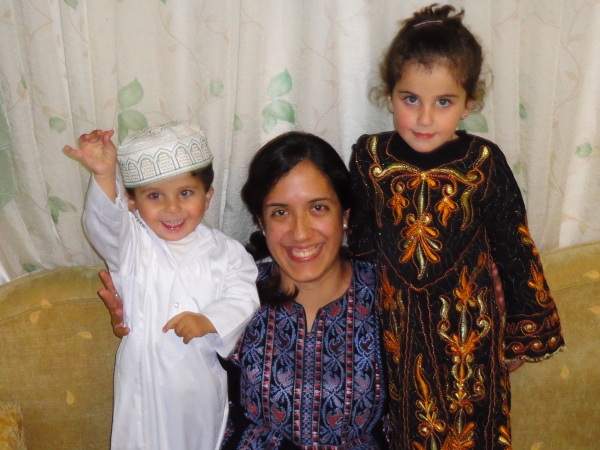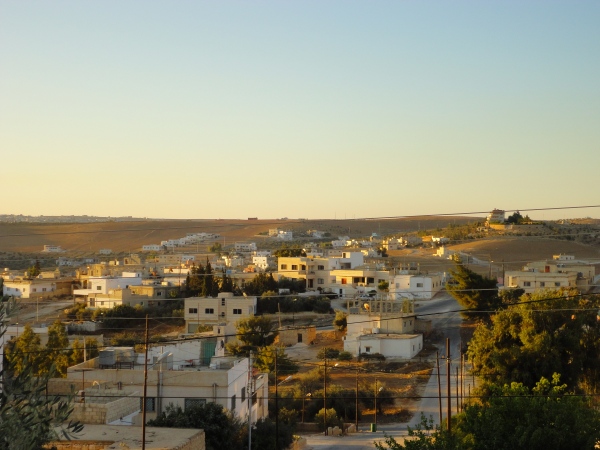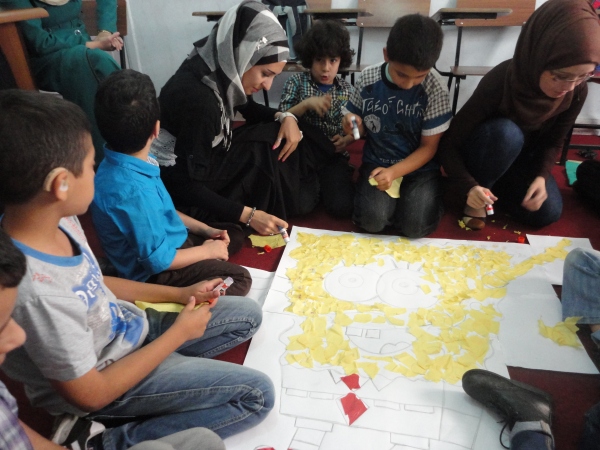A year ago, life was a little different. I was driven from the college dorm rooms of AlBayt University and dropped off in front of a home in a village outside of Mafraq City. The nervousness and anxiety were out of control. The thought of having to communicate in Arabic which at the time was limited to greetings and introductions, to follow cultural rules that were still quite blurry and confusing, and resigning to life as a I knew it, was overwhelming.
I remember stepping into the doorway and looking at my host mom for the first time. She greeted me with a smile and the series of hello’s and how are you’s that Jordanians normally use to greet you. We walked up the stairs, hauling my suitcase and backpack, to meet up with my host dad in what would be my bedroom for the next few weeks. At one point, I believe my host mom asked me how I was feeling in English and I instinctively answered in English, to which my host dad responded, «In Arabic only, no English» and walked out of the room.
The next 10 hours were probably the longest 10 hours of my stay there. We moved into the living room, where she and I ate our first futur (breakfast) together. Below is a picture of a typical futur arrangement. From left to right: zatar (thyme), halewah (dense sweet made out of nuts, sugar, etc), shai (black tea with tons of sugar), makdous (stuffed pickled eggplant), packaged jubna (cheese), khobez (pita bread), and zait (olive oil).
 Then, we went on what seemed a marathon of visits and meets. As we sat and drank countless cups of shai, juice, and Pepsi, her sisters, sisters-in-law, brothers, brothers-in-law, nephews, and nieces walked in and out greeting and introducing themselves. At one point, I remember turning to Meg (another Peace Corps volunteer living next door to me with my host mom’s brother’s family) and asking what time it was, only to find out that it was 2pm in the afternoon!
Then, we went on what seemed a marathon of visits and meets. As we sat and drank countless cups of shai, juice, and Pepsi, her sisters, sisters-in-law, brothers, brothers-in-law, nephews, and nieces walked in and out greeting and introducing themselves. At one point, I remember turning to Meg (another Peace Corps volunteer living next door to me with my host mom’s brother’s family) and asking what time it was, only to find out that it was 2pm in the afternoon!
Over the weeks, my understanding of village life got better and better. My host mom would adjust my scarf if a bit of the back of my neck was showing, her nieces would tell me that wearing nail polish and a ring on my right index finger was haram (apparently, the right index finger is used to point at Allah), and my 4 year old host sister would tell me when it would be okay to step out of the house (I was not allowed to step out before or after call of prayer, the idea being that men going in and out of the mosque were not supposed to see the unmarried American running around).
My relationships with Lin (host sister) and Amer (host brother) became synonymous to the relationships that I have with my brothers and sister back home. Lin loved playing «Uno» and «Tic-tac-toe» and drawing pictures of animals, while Amer was into the «Hide and seek» and tickling. Amer became quite fond of me, that one of his first words was actually my name or at least something that sounded like it, «Judes.» Below is pictures of us, wearing traditional Jordanian attire:
The Judith that had arrived in Jordan and the Judith that was now living in a village were becoming more and more different. For one, hygiene. I think I showered may be twice a week: once at my host parents’ home and second time during our weekly meets at AlBayt University. My outfits consisted of a mix of black and gray pants, skirts, long sleeve shirts, scarves, and coats. I became so used to being surrounded by people, that when I was alone in my room, I felt weird. For fun, I would get together with other Peace Corps volunteers to watch Turkish soap operas and snack on chocolate, cookies, and tea. When I was feeling especially tired or upset, I resorted to countless bars of Twix, Snickers, and Kit Kat and Nescafe and cappuccino cups. Super healthy, right?
January 4, 2012, my village life came to an end and on January 5th, I moved to my current location. Below is the view of one side of the village from what was our balcony:




